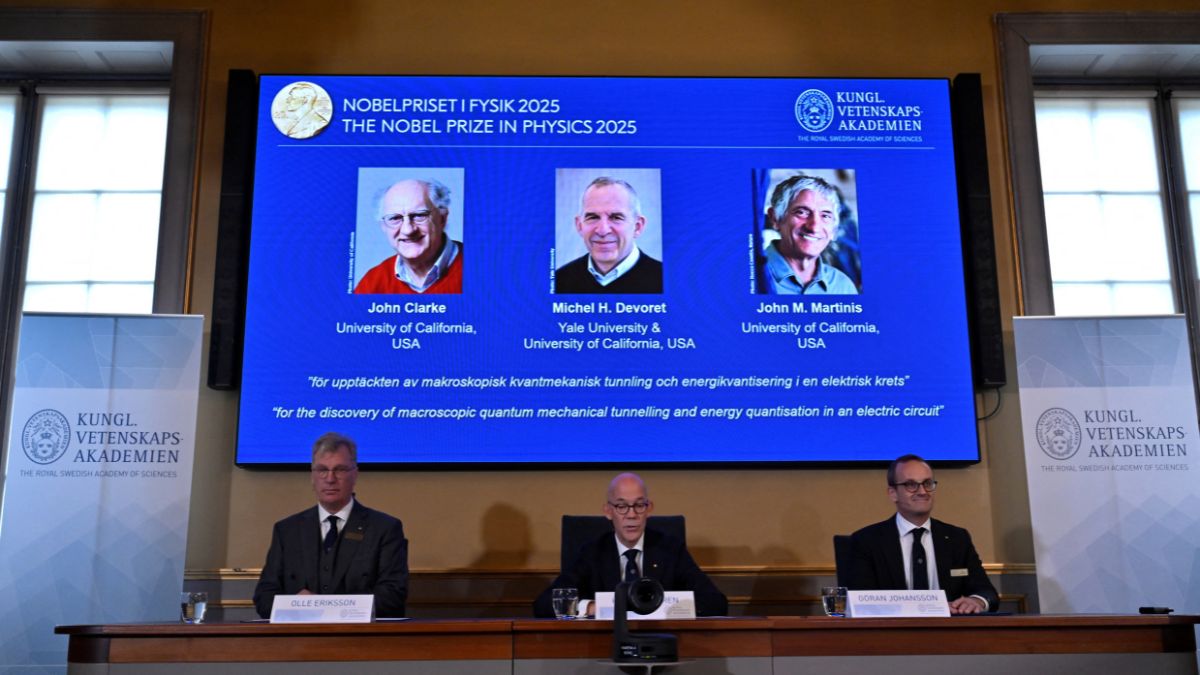The 2025 Nobel Prize in Physics has been awarded to Professors John Clarke, Michel H Devoret, and John M Martinis for their breakthrough in quantum tunneling. They are associated with the University of California.
Clarke, Devoret, and Martinis have been awarded the Nobel Prize “for the discovery of macroscopic quantum mechanical tunnelling and energy quantisation in an electric circuit”, the Nobel committee said in a statement.
Their major achievement has been to take quantum tunnelling from microscoping to macroscopic level — large enough to be seen with naked eye.
Previously, tunnelling and energy quantisation had been studied in systems that had just a few particles but Clarke, Devoret, and Martinis conducted experiments with an electrical circuit in which they demonstrated both quantum mechanical tunnelling and quantised energy levels in a system big enough to be held in the hand, the statement said.
Quantum mechanics allows a particle to move straight through a barrier using a process called tunnelling, but as soon as large numbers of particles are involved, quantum mechanical effects usually become insignificant, the statement said.
Experiments conducted by Clarke, Devoret, and Martinis demonstrated that quantum mechanical properties can be made concrete on a macroscopic scale, the statement said.
The idea of quantum mechanics is that, unlike classical physics, objects don’t move like solid balls but like waves and there is a probability of objectives passing through off-limit things like a wall. For example, in classical physics, particles behave like solid balls. But in quantum mechanics, they behave like waves. And if a barrier —like a wall— is thin enough, there is a chance that a particle can ’tunnel’ through it and appear on the other side.
)